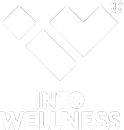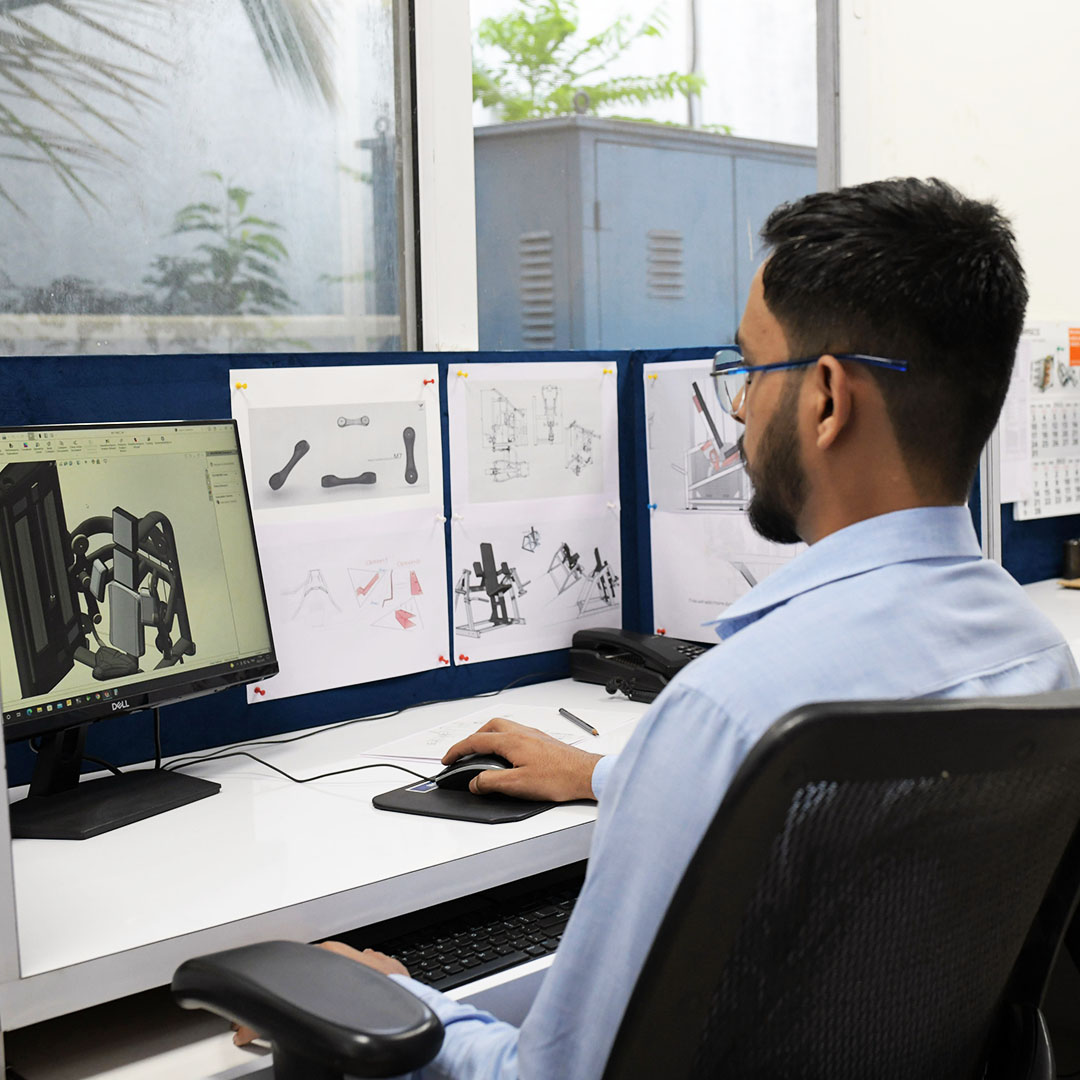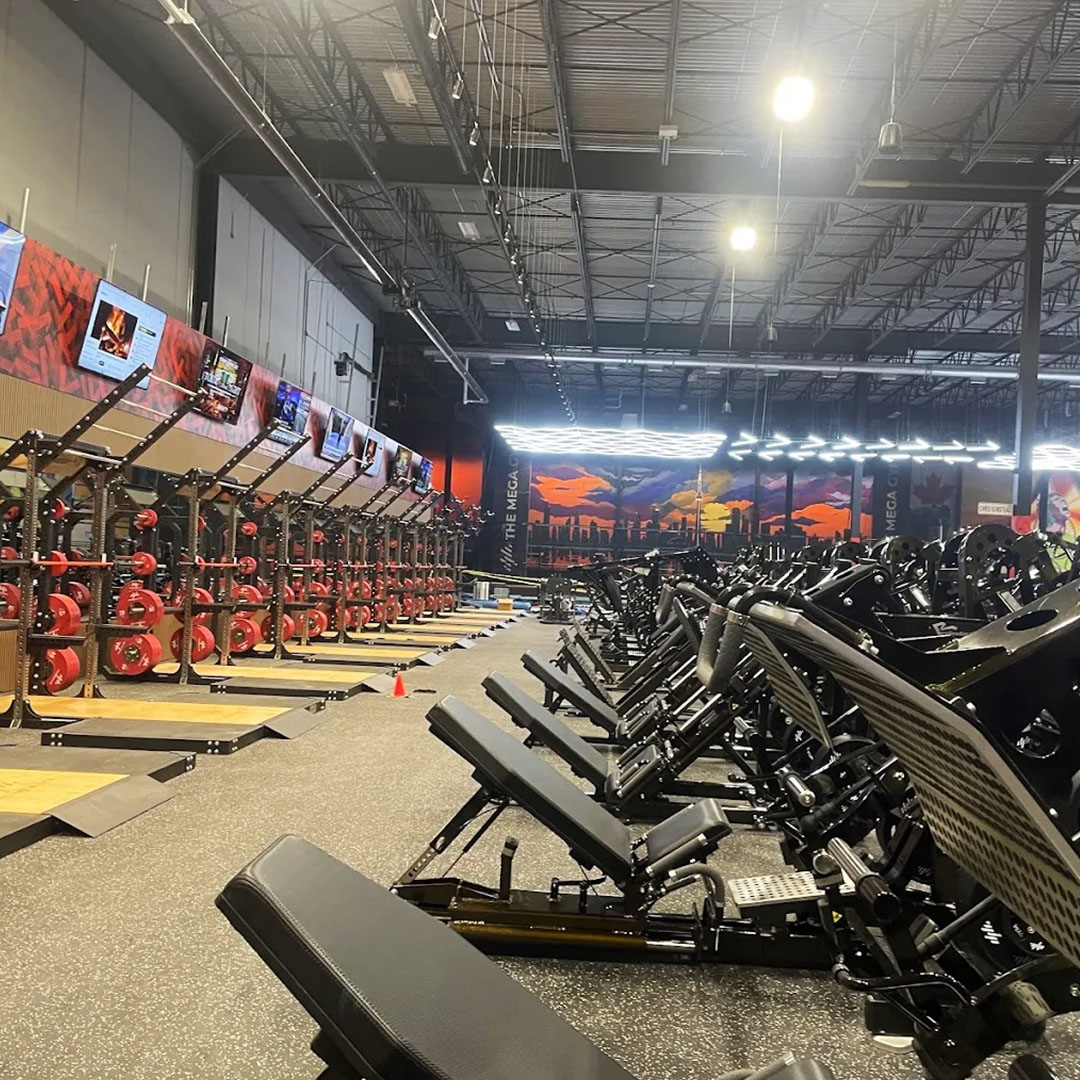Bodybuilding and powerlifting are two types of weight training, which are chosen as per individual fitness goals. Bodybuilding primarily focuses on aesthetics, muscle growth (hypertrophy), and symmetry, while powerlifting is about gaining maximum strength mainly in the squat, bench press, and deadlift.
While bodybuilding and powerlifting can be done for competitions, they are also styles of training that one can follow to build muscle, increase strength, build endurance and improve overall fitness levels. Let’s walk you through the basics of both bodybuilding and powerlifting, along with their potential pros and cons, so you can decide which training method can be best for you.
The Basics of Powerlifting
Powerlifting is a competitive sport that assesses your ability to lift the maximum weight possible for one repetition, using a barbell in back squat, deadlift and bench press. From an exercise standpoint, the goal of powerlifting is to generate the maximum amount of muscular force for the given movements of weight lifting.
In powerlifting competitions, judges assign a pass-fail score to the technique applied for each lift. There are three judges involved, and a passing score from at least two judges is needed for the lift to count as valid.
Presuming you execute the lift considering proper technique standards, the sole measure of performance is your 1RM on each lift. Your score is then calculated in terms of the absolute weight lifted and the weight lifted as compared to your weight.
Powerlifting competition rules are usually broken down into:
- Raw: Generally allows only a lifting belt and knee sleeves.
- Equipped: Allowing special suits and knee wraps.
Although powerlifting is a competitive sport, those interested in this style of training can practice the lifts considering all the aspects of powerlifting, without needing to prepare for a competition. Technique is absolutely essential for improving the amount you can lift over time, irrespective of whether or not you’re preparing for the competition.
How to Train for Powerlifting?
The training revolves around increasing strength primarily around squat, bench press and deadlift because powerlifting focuses on 1RM performance around these movements.
- Powerlifters mostly opt for the low-bar back squat variation, a medium-to-wide grip bench press, a standard or a sumo-style deadlift.
- Through consistent practice, these lifting techniques push you further to lift the most amount of weight by recruitment of the largest muscles.
- For your body to support the massive weight lifting progress, you need to train with additional exercises along with your squat, bench, and deadlift. These additional exercises are typically known as assistance exercises, primarily for stabilizing during the main lifts, thereby helping avoid muscular imbalances and reducing the risk of injury.
- For example, on a squat or deadlift-focused day, glute and hamstring strengthening can be practiced through Good Mornings, Romanian Deadlifts, or even Lunges.
- So, focusing on lower repetition ranges of 1–5 reps with heavy weights and long rest periods is essential to improve maximal strength.
- In the long run, you may also have to indulge in training at higher rep ranges to maintain and increase muscle size.
Pros and Cons of Powerlifting
Powerlifting is a challenging and taxing form of training, but it is worth considering since you will need to prioritize your training sessions and recovery to fully engage in a powerlifting program.
Pros:
- Compound movements (including the three main powerlifting lifts) are excellent full-body exercises.
- The challenging attributes are what make powerlifting a rewarding choice for many.
- Squats, deadlifts, and bench presses target every major muscle group in your body.
- These lifts also translate into better functional movement during everyday activities such as pushing, pressing, hinging, and squatting.
Cons:
- The heavy compound lifts are very fatiguing, and there is a higher risk of injury when pushing near maximal weights consistently.
- Powerlifting is not the best choice for individuals who are new to resistance training.
The Basics of Bodybuilding
Bodybuilding is a style of training that aims to increase muscle size and symmetry; which has been a sport and culture, well-established, and put into practice for decades. This makes bodybuilding workouts a fitness goal to many aiming to obtain a muscular aesthetic.
Bodybuilding is a sport that judges competitors based on their overall physical appearance on competition day, which includes their muscle size and symmetry, along with other physical attributes and posing techniques.
Bodybuilders pose in speedos, bikinis, or other revealing outfits, on the stage and receive a score based on various physical attributes such as muscle size, symmetry, and definition.
You’re judged based on the aesthetic of your appearance, not on any measure of physical performance, even though posing for bodybuilding requires you to practice and perfect your routine. Different bodybuilding competitions have their respective clothing requirements and might favor separate overall looks from the competitors’ physiques.
How to Train for Bodybuilding
Unlike powerlifting, bodybuilding training focuses on large and small muscle groups, focusing on both isolation exercises as well as compound movements. Isolation exercises target specific muscles rather than larger muscle groups, such as bicep curls, tricep extensions, hamstring curls, lateral raises, rear delt fly, and more.
Bodybuilding also uses many techniques, reps, and set ranges that are changed over weeks and months, as you progress in your workouts. In bodybuilding, you lift slightly less weight than a powerlifting workout but this does involve more overall repetitions. The rest periods for these workouts tend to be somewhat shorter, about 1–2 minutes between sets.
The training changes and the number of sets and repetitions are manipulated, particularly to encourage continued adaptations that lead to muscle growth. Increasing the amount of volume you lift is definitely required, primarily for continued growth.
Apart from training, bodybuilding also focuses on nutrition. Tailored nutrition is often partnered with training programs for aspiring bodybuilders to develop their bodies as per their individual goals and bodily requirements. Nutrition can include high protein diets, macronutrients, supplementation, and adjusting calories to either gain muscle or lose body fat.
Pros and Cons
Pros:
- Bodybuilding is an excellent way to gain muscle as its structure and variety of movements included in its programs, help in endurance and developing muscles.
- A combination of compound and isolation workouts ensure training of small and large body parts focusing on symmetry, in turn reducing the risk of muscular imbalances.
- Compound and isolation bodybuilding exercises are also functional movements that greatly improve day-to-day activities and performance.
Cons:
- Bodybuilding can be dangerous for your mental and physical health if you become obsessive over your appearance.
- This culture is also well known for leading to body image and eating disorders.
If you find yourself getting into the negative mental and physical zone, then don’t feel ashamed to seek help from a qualified therapist, so that you can save yourself from an unhealthy relationship with food or exercise.
Which One is the Best for You?
If you are trying to choose between powerlifting and bodybuilding, it’s first important to understand that these training styles are very different and hence it depends on what exactly your fitness goal is. If your primary goal is to gain strength in the three compound lifts, then powerlifting may be ideal, especially if you plan on competing. On the other hand if you’re planning on building muscle size and symmetry, then bodybuilding will probably work the best.
A simplified version of bodybuilding that focuses on both strength increases and muscular growth, with different cycles of programming throughout the year is a good choice to make. Unless you plan on competing in bodybuilding competitions, you can take a more relaxed approach, without any pressure, to your training than (unlike competitors). Remember, anything above limits, both mentally and physically especially when it comes to incorporating unrealistic fat loss and nutritional strategies, can not just be unhealthy, but also damaging to yourself in the long-run.
With powerlifting and bodybuilding, it’s strongly recommended to seek the guidance of a professional trainer or a specialist in the particular training style you are interested in. The trainer can help you gain a solid understanding of how to perform the movements involved in your program. Also, don’t forget that lifting very heavy and/or very frequently can lead to overtraining, injuries, strains, joint issues, and an increased risk of major long-term injuries.
Summary
Powerlifting and bodybuilding are both sports that rely on resistance training using barbells, dumbbells, and other resistance training equipment.
While the sports may seem to be similar, the competitive performance goals are quite different. Each sport also offers many health benefits, but there are also downsides that need to be given equal importance.
However, if you incorporate powerlifting or bodybuilding training into an overall balanced fitness routine, you can significantly improve your strength and overall fitness. Powerlifting and bodybuilding are two different extremes of training styles and unless you plan on competing, a balance between the two with cycles of strength and hypertrophy training throughout the year will most likely be best.
If you’re new to resistance training, then jumping onto either or the two types of training is not recommended. It is essential to gain more experience and understanding of resistance training and make sure to speak to a doctor and seek guidance from a personal trainer before starting any strict workout routine.







